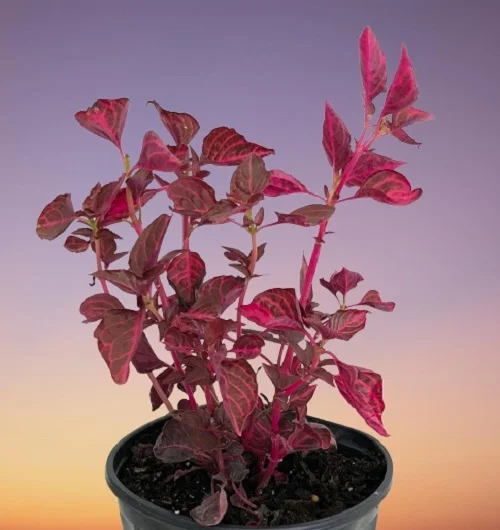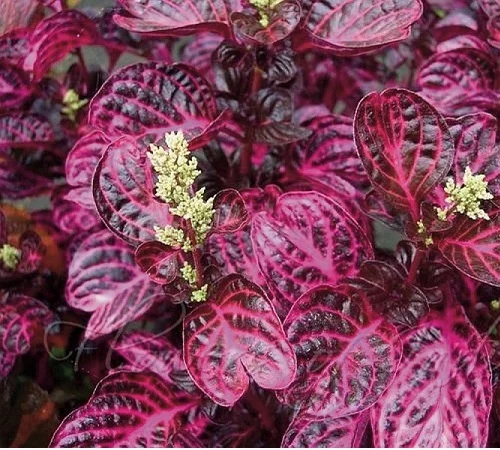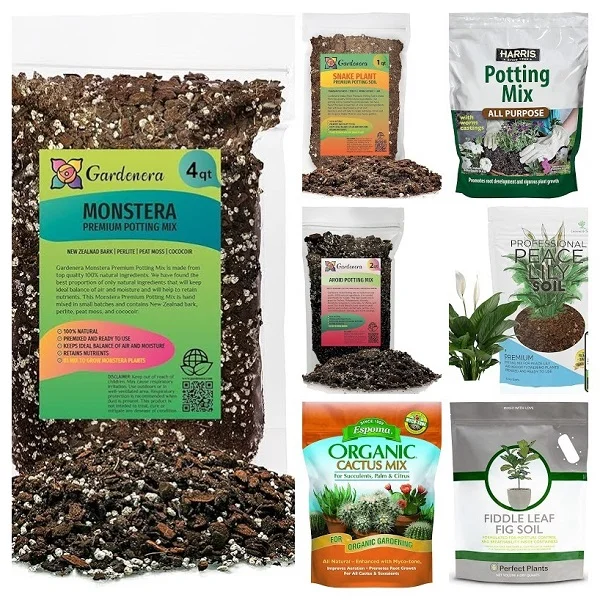Chicken Gizzard Plant (Iresine herbstii aureoreticulata) Indoor Care, Problems and Solutions
Last updated on
Some links in this post may be affiliate links
Chicken Gizzard Plant (Iresine herbstii aureoreticulata) thrives in very bright light with some sunlight, warm and humid conditions and consistently moist, rich, well-drained, all purpose soils.
Chicken Gizzard Plant also called Yellow Iresine is a colorful indoor plant which bears red stems, green leaves with yellow veins and is an excellent addition to any houseplant collection for a splash of color.
Yellow Iresine can grow to a height of 2 feet when grown indoors. The leaves are either rounded or lance-shaped with yellow veining.
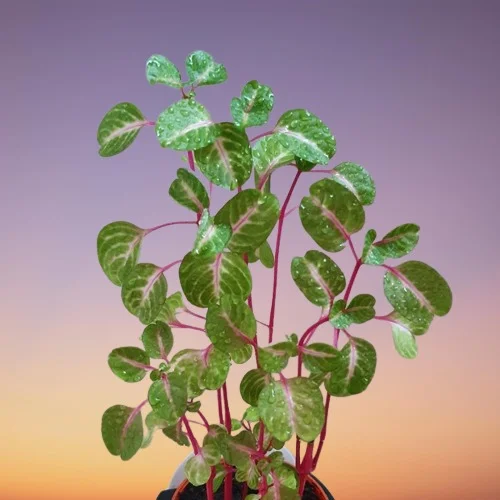
Botanical name: Iresine herbstii aureoreticulata
Family: Amaranthaceae
Common names: Chicken Gizzard Plant, Yellow Iresine
Origin
Iresines are native to the American tropics where the growing conditions are warm, moist and humid.
Flowers
Chicken Gizzard Plant bears small, greenish-white flowers which are not as conspicuous as the brightly colored leaves. Pinch out the flowers as soon as they begin to form so that the plant can direct its energy to growth other than developing the flowers.
Related Plants
Iresine herbstii aureoreticulata is related to Iresine herbstii (Bloodleaf Plant) which bears wine red stems and leaves with prominent red veins. It is another of the common Iresine varieties that can be grown indoors.
Is Chicken Gizzard Plant toxic?
No. Chicken Gizzard Plant is non-toxic to humans and pets as indicated by ASPCA. Chicken Gizzard Plant is safe for cats, dogs and other pets. However, the plant sap may cause irritation on sensitive skin. It is advisable to always wear gloves when handling this plant.
Where to Buy
Iresine Plants are beautiful plants to add to your collection, check them out online on Etsy (Link to Etsy) or on Amazon (Link to Amazon).
How to care for Chicken Gizzard Plant indoors
To care for Chicken Gizzard Plant indoors, provide very bright light with 4-6 hours of sunlight, average warmth of 18-270C, humidity of 55-65% and consistently moist, fertile, well-drained soils coupled with fortnightly feeding during the growing season.
Iresine herbstii aureoreticulata care requires regular pruning to keep it neat and control growth. Repotting is only necessary when it becomes pot-bound. Keep reading for a detailed account on these growing conditions and how to provide them.
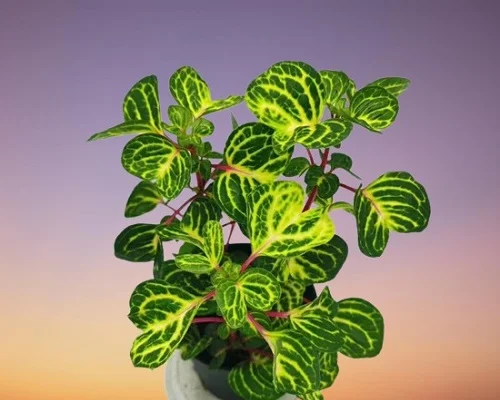
Light Requirements
Chicken Gizzard requires very bright light with 4-6 hours of direct sunlight to enhance the leaf color and prevent legginess. However, do not expose the plant to hot midday sunshine as it can cause scorching resulting in unsightly brown marks on the leaves.
Insufficient light will cause the plant to become leggy and lose its vibrant foliage color, Therefore, where the natural lighting is not adequate, use full spectrum grow lights to supplement it.
Regularly rotate the pot to ensure that the plant receives light on all sides for balanced growth and prevent leggy growth.
Watering
Water Chicken Gizzard Plant thoroughly in spring and summer and allow the top 1-2 inches of soil to dry out between waterings. Keep the soil consistently moist but not soggy to avoid rotting, yellowing and leaf drop.
Cut down on watering in fall and winter as growth is minimal at this time to maintain the soil slightly moist. Do not allow the soil to dry out completely to prevent wilting, drooping and leaf loss.
Use room temperature water to avoid cold shock which can result in slow growth and leaf drop. Do not use chlorinated water; use rain water or filtered water to avoid browning of leaves.
Make sure that the pot has a drainage hole to avoid getting soggy soil as can result in root-rot and death of the plant.
Temperature & Humidity
Chicken Gizzard Plant flourishes in an average warmth of 18-270C. Keep it away from drafts as they cause sudden changes in temperatures resulting in reduced growth and leaf drop.
Yellow Iresine requires a humidity of 55-65% to thrive. You may raise humidity by setting the pot on a wet pebble tray or by using a cool mist humidifier. Maintain good air circulation to minimize fungal diseases.
Fertilizer
Feed your Chicken Gizzard Plant with a balanced, liquid fertilizer every 3 weeks during the growing season (spring and summer). Stop feeding in fall and winter as the growth is slowed at this time.
Potting Soil
The best potting mix for Chicken Gizzard Plant should be rich in organic matter and free-draining to prevent it from getting soggy while providing the required nutrients.
Repotting
Repot Yellow Iresine at the beginning of the growing season (spring to early summer), only when the roots grow out of the drainage holes; it prefers to be root-bound.
Select a pot 1-2 sizes larger than the current one. Ensure that the pot has a drainage hole to prevent waterlogging which can lead to root-rot. Check out these self watering planters with drainage hole on Amazon.
Pruning & Grooming
Pruning Chicken Gizzard Plant involves pinching of the growing tips to encourage bushy growth and to control growth. Cutback the tall stems in spring to early summer to prevent the plant from becoming leggy.
Clean the leaves regularly by damp-wiping with a soft cloth to get rid of dust and also discourage pest and disease infestations.
Chicken Gizzard Plant Propagation
Chicken Gizzard Plant (Iresine herbstii aureoreticulata) is propagated at the beginning of the growing season from stem cuttings which can be rooted either in water or in soil.
Learn how to propagate Chicken Gizzard Plant (Iresine herbstii aureoreticulata) from stem cuttings.
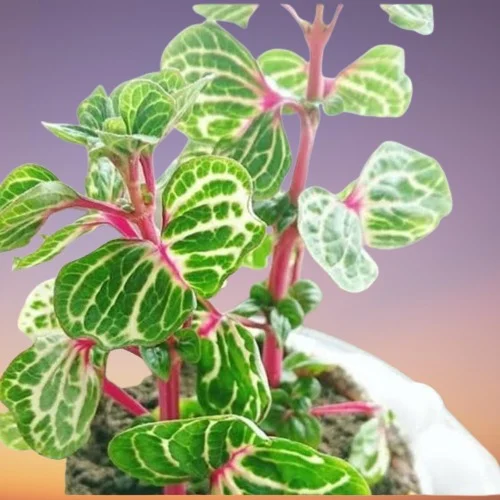
Iresine herbstii aureoreticulata Problems & Remedies
Chicken Gizzard Plant (Iresine herbstii aureoreticulata) problems include loss of leaf color, leggy growth and pests infestations. Keep reading for more on these problems and how to fix them.
Loss of leaf color
Loss of leaf color in Chicken Gizzard Plant is caused by inadequate light. Move the plant to a brighter spot as it grows best in very bright light with 4-6 hours of direct sunlight or instal a grow light if the natural lighting is not adequate.
Leggy growth
Leggy growth (Weak elongated stems) in Chicken Gizzard Plant are due to too little light. Position the plant in a brighter spot with very bright light with at least 4-6 hours of direct sunshine or use grow lights if the natural lighting is not enough.
Pests
Chicken Gizzard Plant is prone to aphids. These sap-sucking insects are attracted to the new soft growth where they cause distorted growth.
Frequently Asked Questions
1. Is Chicken Gizzard Plant indoor or outdoor?
Chicken Gizzard Plant makes a good plant for gardens and landscapes in the warm climates meaning it is ideal for USDA zones 10-12. In the cooler climates it is grown as an indoor plant or as a container plant that can be brought indoors during winter.
2. How do you take care of a Chicken Gizzard Plant?
Chicken Gizzard Plant does well in very bright light with 4-6 hours of direct sunlight, average warmth of 18-270C, moderate to high humidity between 55 and 65% and consistently moist, rich, well-drained soils coupled with fortnightly feeding during the growing season.
3. Chicken Gizzard Plant Propagation?
Chicken Gizzard Plant is easily propagated at the beginning of the growing season from stem cuttings which can be rooted either in water or in soil.
You liked it? Share on social media.
Related Content
Amazon Associates Disclosure
Homeplantsguide.com is a participant in the Amazon Services LLC Associates Program, an affiliate advertising program designed to provide a means for sites to earn advertising fees by advertising and linking to amazon.com.



